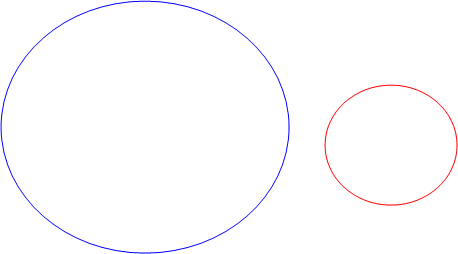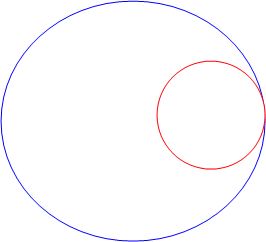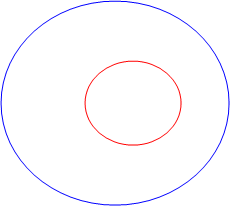Skip over navigation

To make the two rings touch grow one slightly bigger than the other and put the smaller one inside and touching the other ring. To make the two rings overlap then make them both same size crossing each other. For the last challenge, putting one ring outside the other you just simply make one tiny and one huge and put the tiny one inside the middle of the big one.
Thank you everyone for your contributions, you may find something similar in our Open Spaces pathway, which is part of our sister site Wild Maths.

Or search by topic
Number and algebra
Geometry and measure
Probability and statistics
Working mathematically
Advanced mathematics
For younger learners
2 Rings
Age 5 to 7
Challenge Level 





- Problem
- Getting Started
- Student Solutions
- Teachers' Resources
Alice from the Perse Senior School for Girls said:
I've done 4 combinations with red and blue separate, red touching the blue, red overlapping the blue and red inside the blue.Here are the images which Alice sent:

red and blue separate
 red touching blue
|
 red overlapping blue
|
 red inside blue
|
Alyssa from Mason Middle School suggested:
You could make them overlapping by making them the same size.
You're right, Alyssa, you could. This would be quite difficult to draw, though, which is probably why you didn't send us an image! We would like to receive more ideas about how you could arrange two circles if you come up with some. Let us know!
Benjamin from Paradykes Primary School in Scotland sent in the followingTo make the two rings touch grow one slightly bigger than the other and put the smaller one inside and touching the other ring. To make the two rings overlap then make them both same size crossing each other. For the last challenge, putting one ring outside the other you just simply make one tiny and one huge and put the tiny one inside the middle of the big one.
Thank you everyone for your contributions, you may find something similar in our Open Spaces pathway, which is part of our sister site Wild Maths.
You may also like
Biscuit Decorations
Andrew decorated 20 biscuits to take to a party. He lined them up and put icing on every second biscuit and different decorations on other biscuits. How many biscuits weren't decorated?

